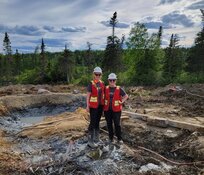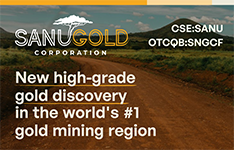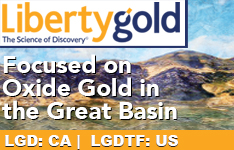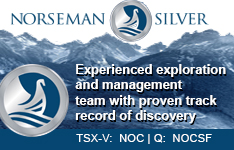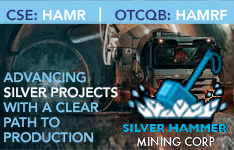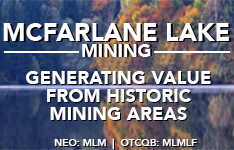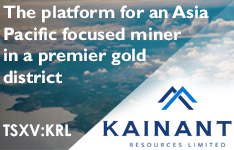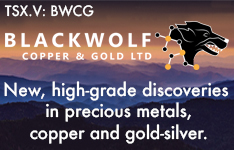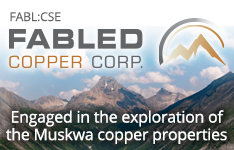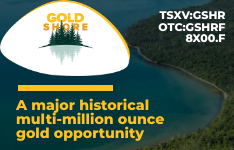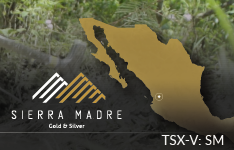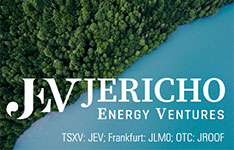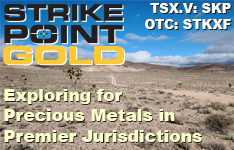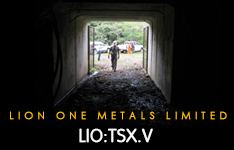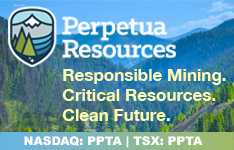John Forward is the CEO of Lowell Resources Funds Management. Lowell Resources Funds Management has managed the Lowell Resources Fund (LRF) Portfolio for 20 years. It operates through an Investment Committee incorporating seasoned professionals across minerals, energy, geosciences, broking, banking, and funds management. LRF provides broad exposure to junior mining and energy companies, actively managed by LRFM per its investment philosophy. The fund aims to take profits when available and exit investments once targets are reached.
Forward has been working at Lowell since 2016. Prior to this, he worked for the South African investment bank Rand Merchant Bank, where he focused on the resource sector.
However, before getting into the finance side of things, Forward's background was built on geology. He worked as a field geologist, primarily looking for copper and gold for small-to-midsized mining companies. With this foundation in geology and knowledge of the financial side, we at Streetwise decided to sit down with Forward and speak about what companies have caught his eye.
Sanu Gold Corp.
The first company Forward spoke about was Sanu Gold Corp. (SANU:CSE;SNGCF:OTCQB). Sanu Gold is a junior mining company focused on discovering multi-million-ounce gold deposits in Africa's renowned Siguiri basin. As a young exploration company, Sanu is dedicated to uncovering major new gold resources in this prolific region for gold production.
Forward first got in contact with Sanu through its CEO, Martin, while attending the Beaver Creek Precious Metals Conference in Colorado. Forward was first enticed by the company due to its projects in Guinea. Lowell Resources had previously worked on Guinean projects, and Forward noted, "Guinea has been a happy hunting ground for us."
Guinea had been a jurisdiction that a lot of investors tended to shy away from due to a coupe in the last few years. However, Forward commented, "The industry itself has actually gone through pretty much plain sailing during that period."
With a liking for the area, all Forward needed to see was the projects.
"Martin showed me the data of the three projects that Sanu had or was acquiring at the time," Forward said. "They were remarkable for such an early stage. Well, there had been a lot of very good foundation work done in terms of exploration, in particular, the termite mound sampling, and that was really comprehensive. There were some great anomalies. And then the project looked relatively undervalued."
Now situated at the company, Forward praised them for being relatively low-impact in terms of ESG. While they are still a small company, he stated, "It's important that you have confidence in the management to be doing the right thing." He noted as the projects progress, he has faith in Sanu's leadership team to go through things the right way.
Lastly, Forward noted the recent channel sampling Sanu had taken from the Bantabaye Permit.
The highlights of the company's report include an average of 1.1 grams per ton (g/t) gold (Au) over 43 m, including 4.2 g/t Au over 6m from channeling on Target 7. According to the company, the channel sampling has shown evidence of "sheared and hydrothermally altered felsic volcanics and returned gold mineralization over its entire 43m length, with individual samples returning up to 13.5 g/t over 1m." The press release also stated that "rock chip samples from Target 7 returned grades of up to 25.2 g/t Au."
Forward called it "a really nice result," and said, "It shows that there's a lot there with the mineralization system. It could be it could be a very large mineralizing system there. As investors, we like to see the potential for something that's, that's really big. And for a company that today has an enterprise value of around only $3 million, it's amazingly, amazingly undervalued."
Headquartered in Vancouver, Canada, Sanu Gold Corp. has a market cap of CA$4.86 million. It has 69.5 million shares, 5.8 million warrants, and 5.7 million options.
 Streetwise Ownership Overview*
Streetwise Ownership Overview*
Sanu Gold Corp. (SANU:CSE;SNGCF:OTCQB)
According to data from Reuters, insiders and management at the company own around 17% of the total shares outstanding. The largest individual insider shareholder is Fatou Sylla Gueye, with over 7% ownership and 5.10 million shares. Martin Joachim Pawlitschek owns 4.19% with 2.91 million shares, Vince Sorace owns 3.60% with 2.50 million shares, Galen Stuart McNamara owns 0.97% with 0.68 million shares, Gavin Cooper owns 0.58% with 0.40 million shares, and Fiona C. Childe owns 0.26% with 0.18 million shares.
Institutional investors own around 7% of the company. The largest institutional shareholders are Commodity Capital AG, with nearly 4% and 2.62 million shares. US Global Investors has around 2% and 1.29 million, and Palos Management has around 1% ownership, with 0.80 million.
The company does not report any strategic investors or partnerships. The remaining shares are held by retail and high-net-worth investors.
The company's monthly burn rate is CA$150,000. Its monthly drilling cost varies according to how much drilling they do at any one time, but the average all-in drill cost is US$120 million.
During the February 2023 financing, 5.556 million warrants were issued, as well as 276,440 broker's warrants.
There are 69.45 million shares outstanding, with 57.69 million free-float traded shares. The company has a market cap of CA$4.17 million, and it trades in the 52-week period between CA$0.06 and CA$0.46.
Rugby Resources
The next company Forward mentioned was Rugby Resources Ltd. (RUG:TSX-V). Rugby Resources Ltd. is evolving its mineral exploration efforts to find minerals that can help meet the living needs of future generations. The company undertakes comprehensive studies to ensure its exploration activities are in harmony with the environment and local communities in the areas where it is searching for minerals. Rugby Resources is focused specifically on mineral exploration and does not take discoveries to the mining stage.
Rugby has a new porphyry copper discovery in Colombia, that Forward notably pointed out is right next door to where Rio Tinto Plc (RIO:NYSE; RIO:ASX; RIO:LSE; RTPPF:OTCPK) has been drilling.
"It looks like this system could all be a part of one large system," Forward said. "And we think that potentially what Rugby has found might even be better than what Rio Tinto has found immediately to the south."
Forward pointed out the immense exploration upside within the company, saying, " Rugby is also a company that's extremely, extremely undervalued. In my view, it's trading around five cents a share with management that has been there and done that before in South America."
The management for Rugby had come from Exeter Resource Corp., where they made a couple of significant discoveries.
Insert ownership and share structure
Talon Metals
Last but not least, Forward touched on Talon Metals Corp. (TLO:TSX). Talon Metals is a base metals exploration and development company, currently in a joint venture agreement with Rio Tinto on the Tamarack Nickel-Copper-Cobalt Project in central Minnesota. The Tamarack Project comprises a large land area (18km strike length) with high-grade nickel intercepts outside of the current resource area. Under the joint venture, Talon has earn-in rights to acquire up to a 60% stake in the Tamarack Project. Currently, Talon holds a 51% interest.
Talon is focused on two key objectives: (1) expanding and infilling the current high-grade nickel resource in accordance with NI 43-101 to shape a potential mine plan for regulators, and (2) following up on additional high-grade mineralization across the Tamarack Intrusive Complex. Talon has an agreement with Tesla Inc. to supply approximately 75,000 metric tons (165 million lbs) of nickel in concentrate (plus cobalt and iron by-products) from the Tamarack Project once commercial production begins over an estimated six-year timeframe.
Forward pointed out that Talon Metals is one of Lowell's largest holdings. One reason Lowell is so optimistic about the company is due to its joint venture with Rio Tinto.
Forward said, "They're earning a majority and some super high-grade intersections of nickel plus copper plus some PGMS." However, according to Forward, the company's share price has been beaten.
"It has come down from short of 80 cents to be trading in the 20 cent range," he said, "but it's a high-grade discovery and potentially also very large."
Insert ownership and share strucutre


